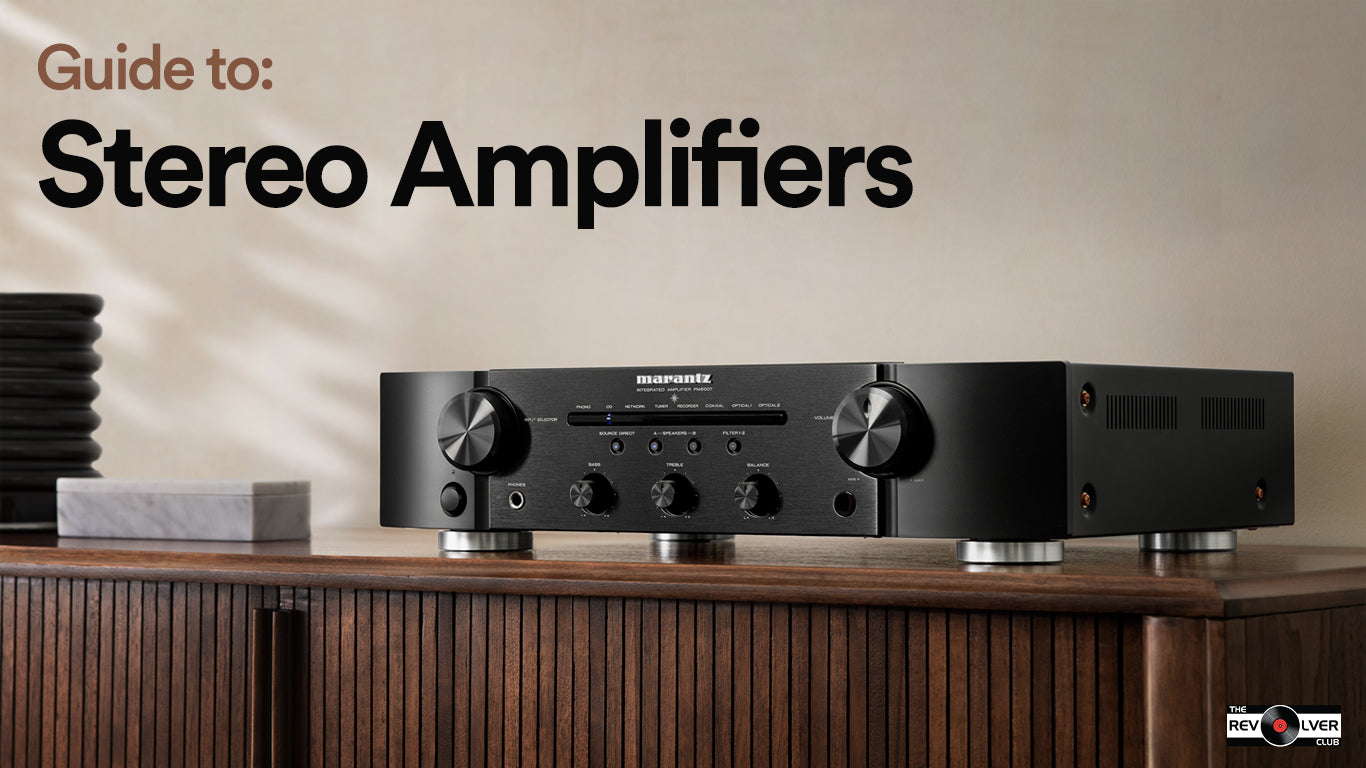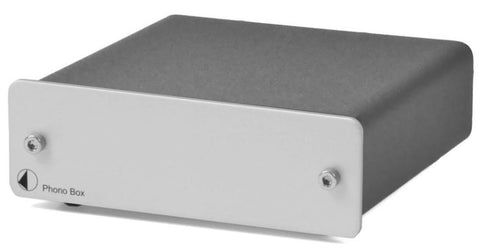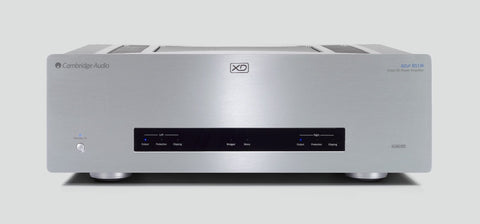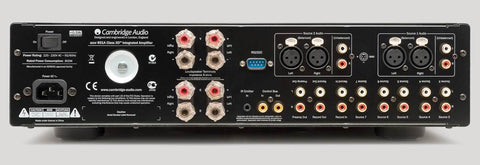Beginners Guide To Stereo Amplifiers

The integrated amplifier is the heart of your stereo or home theatre system and also its control center. It accepts inputs from a range of sources – computers, CD players, Blu-ray players, turntables, tuners, smart phones, tablets and DACs.
It lets you choose which source to listen to. It amplifies that signal and feeds it to your speakers or possibly your headphones. It may even allow you to adjust the sound through bass and treble controls or a loudness contour.
In most cases it will also come with a remote control so you don’t have to get up from your chair.

Stereo Amplifier is basically a power amplifier whose main function is to enhance low power audio to highly enlarged audios which have enough power to be accepted by a loudspeaker or any stereo speaker.
Every stereo system requires an amplifier, it is what breathes life into the loudspeaker. Even the smallest loudspeakers have an amplification module somewhere in their structure, only it’s usually integrated so well that it can’t be seen.
Stereo Amplifiers are responsible for amplifying the incoming audio signal in a way that will not only alter it’s quality but simply enhance it so that your speakers can play the music that is true to its source.
Types of Stereo Amplifiers:
1. Pre-Amplifier:

The job of a pre-amp is to take a low level signal from an audio source and prepare it for the next stage of amplification.
Without the pre-amp, the final signal would be noisy or distorted. The preamp lets you switch among your sources and control the volume.
The preamp may also include balance and tone controls.
2. Power Amplifier:

After the audio signal is converted into an electrical signal, it has several voltage amplifications done, after which the power amplification of the amplified signal is done just before the loud speaker stage.
In short, the power amp takes the weak signal from the pre-amp and gives it that extra drive required for it to be heard through the speakers.
3. Integrated Amplifier:

It is made up of a pre-amp and power-amp in one box. It’s ideal if you’re working to a budget or don’t have the space for two separate units.
This the most simple, convenient and space-saving option, packing both pre- and power amplification into one chassis.
This means everything has been tuned together, saving you the work that goes into matching separate amplifiers.
The general rule in hi-fi is that splitting each stage of the music reproduction journey into its own single unit will give you a better overall sound.
Splitting pre-amplification (input selection and volume control, fundamentally) from power amplification (go on, guess) is done in order to keep the sensitive preamp circuitry (and the delicate audio signals flowing through it) away from the electrically noisy high-current power amplifier section.
Choosing the right amplifier:
If you’re designing a sound system, you will need to ensure that you choose speakers and amplifiers that work well together.
If you choose the wrong amplifier for your speakers, you run the risk of causing damage to your equipment in the worst case or getting poor sound quality in the best case.
A general rule for choosing an amplifier is to select an amp that provides 1.5-2 times the continuous power rating of your speaker. This will ensure the speaker has enough power while leaving yourself 3dB of headroom.
1. There are two basic factors to keep in mind when choosing an amp that is compatible with your speakers: 1. Impedance 2. Power
As you’ll see, these two factors are closely interrelated.
Impedance is measured in ohms and refers to the opposition a circuit presents to electrical current. A speaker will “impede” the flow of electricity being created by the amplifier.
The nominal impedance of most speakers is 4, 8, or 16 ohms. A better insight into an amp’s muscularity is to compare its power output into 8 ohms with that into 4 ohms.
An ideal amp would double its output as impedance halves; so, though most won’t achieve it, the closer it gets the better.
Though you may be tempted to go for the most powerful amp you can afford, you’ll usually do better by buying a more sensitive speaker.
That’s because an amplifier’s output has to double to match a 3dB increase in speaker sensitivity.
Power is measured in watts and refers to the rate that energy is transferred. The power rating of your speaker can also be found in the technical specifications.
We’re more concerned with how much power a speaker can handle over an extended period of time. This is the continuous power rating of the speaker. More power doesn’t necessarily mean louder.
The loudness is ultimately determined by the sensitivity of the speaker, which can vary. Some speakers will provide more sound than others when supplied the same power level from the amplifier.

2. Analog Audio Inputs:
If you are into vinyl, them it’s essential for the stereo amplifier to have an integrated phono input. And additional RCA inputs come in handy for adding a standalone DAC, a cassette deck, or the analog output of a CD player.
If you prefer to use an outboard phono preamp, you'll need to plug it into your integrated amp via a standard RCA input, too. It’s is also good to consider a stereo amplifier with XLR inputs as some high-end sound systems use balanced XLR connections that offer superior noise rejection.
3. Digital Audio Inputs:
Some integrated amplifiers include a built-in digital-to-analog converter (DAC) that turns digital signals into analog sound your speakers can reproduce.
- A coaxial digital input is required for connecting the digital output of CD players.
- Similarly, an optical digital (Toslink) input offers connectivity to the output of a Television or a Blu-ray player
- Music lovers who have high-resolution music files stored on their computers will need a USB Type B connection or an ethernet port
4. Wireless Connectivity:
A number of integrated amplifiers support wireless music streaming — you can’t beat it for convenience. And some let you add compatible speakers and components to create an expandable wireless whole-home audio system.
- Built in Wi-Fi allows you to connect to wireless networks in your home as well as to popular streaming services like Spotify, Amazon HD and TIDAL
- Bluetooth lets you stream music wirelessly from apps on your smartphone, tablet, or computer
5. Outputs:
- A headphone jack provides a great way to enjoy your music without disturbing others
- Speaker connectors to connect your pair of speakers
- A subwoofer out in case you choose add one to your hi-if system
Stereo Amplifier Setup:

A phono pre-amplifier is required only in case of a turntable without a built-in pre-amp.
A CD Player and Digital Streamers can be connected to speakers without the need of a phono pre-amp.
Final Thoughts
With a variety of stereo amplifiers in the market to choose from, your decision while putting up a budget for an amplifier should be purely based on:
- Space in which you plan to put together a stereo system setup
- Source components of your stereo system setup
Click here to check out our Stereo Amplifiers collection
At TRC, We have got you covered -
- Quick product consultation - Talk Now
- Wide range of Vinyl Records
- Be a part of community events
- Top notch Installation & After sale support
Shop New Vinyl Records | Recordwala | Turntable & Stereo | Home Theater Systems




